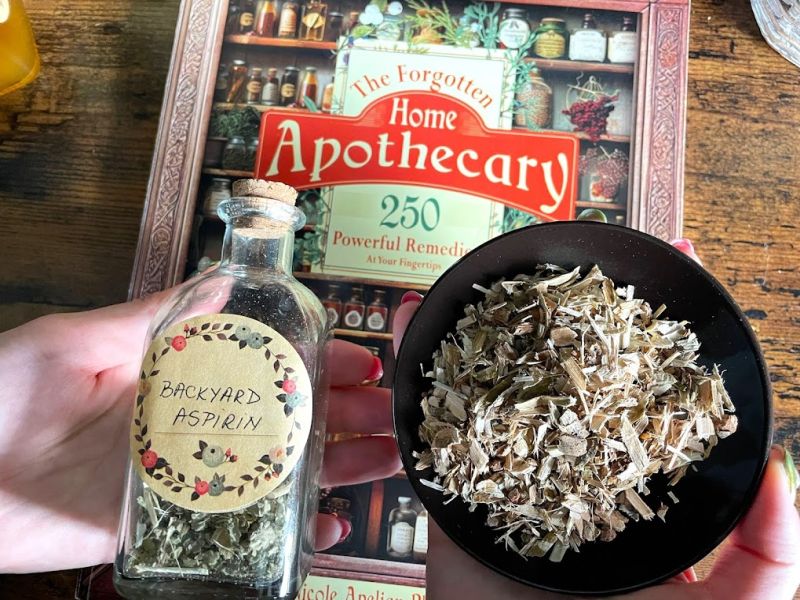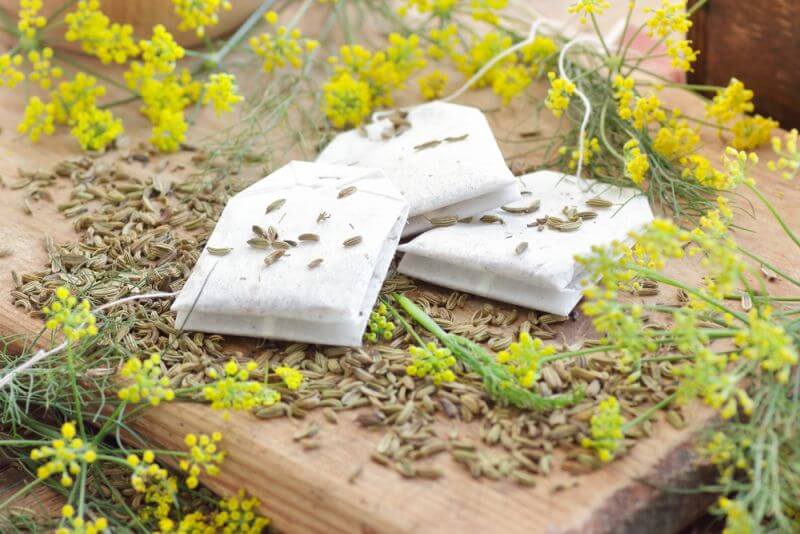For many years, folks have dismissed traditional remedies as outdated or mere health superstitions. However, these time-tested practices were passed down through generations for good reason. They are straightforward, cost-effective, and comforting—and they actually work.
In recent years, as we’ve moved away from our grandparents’ herbal wisdom, many people have found themselves rediscovering the art of home herbal care. Through books, online resources, and personal experimentation, a lot of folks are unearthing remedies that were once common knowledge.
Today, we have access to more information in a few moments than our ancestors encountered in their lifetimes. While this abundance of knowledge is empowering, it can also be overwhelming. As a prepper and herbalist with a vast network of people, I’ve observed a growing trend: many learners feel lost in the sheer volume of advice available. The challenge lies not in finding information, but in knowing where to start.
A good place to begin is with what you already have on hand. In this article, I’ll introduce a few simple, effective folk remedies that require no special acquisitions. These remedies highlight the beauty of simplicity and have stood the test of time, providing reliable solutions handed down through generations.
Old cold remedies:
Saltwater gargle
My grandparents would begin each day with a saltwater gargle, and this was a practice they learned from their parents. Today, I follow in their footsteps, and gargling remains one of my favorite heritage remedies. You can incorporate it into your daily routine, use it seasonally during fall and winter, or reach for it when you feel the first signs of a scratchy throat.
And if you are curious to figure out how old this remedy is, you will discover that it has ancient roots in traditional medicine. Ancient Greek physician Hippocrates (460–370 BCE) recommended it for throat ailments, and similar practices were used in Ayurveda and Traditional Chinese Medicine to support respiratory health. By the Middle Ages, saltwater rinses were common in Europe for sore throats.
Scientific research is beginning to validate what older generations intuitively knew. Various studies have confirmed that saltwater gargling is useful in the prevention and treatment of upper respiratory infections. Studies have shown that saltwater helps draw viral particles out of cells and flushes them away before they can replicate. It also stimulates the immune cells to produce hypochlorous acid, which helps fight infection.
Saltwater Gargle Recipe
Ingredients:
- 1 cup warm water (not hot)
- 1/2 teaspoon salt
Directions:
Dissolve the salt completely in the warm water. Take a sip, tilt your head back slightly, and gargle for 15–30 seconds. Spit it out and repeat until the mixture is used up. Use 1–2 times daily for sore throats or as needed for oral hygiene.
Raw garlic and honey
Garlic has one of the longest and richest histories as a folk remedy, with ancient medical texts from China, Egypt, Greece, India, and Rome documenting its use to promote health and stamina.
Modern research sheds light on this ancient wisdom, showing that garlic contains sulfur compounds, trace minerals, and antimicrobial properties that support immunity. Studies suggest that garlic boosts white blood cell production, enhancing the body’s natural defenses against infections. Garlic is particularly valued for helping to ward off colds and flu, especially when used proactively or at the first sign of symptoms like low energy or a sore throat.
Raw garlic is one of the most potent tools for fighting colds and flu. However, some people experience digestive upset when consuming it raw. To mitigate this, try garlic honey mixed with a bit of butter for a gentler effect. Alternatively, add freshly pressed garlic to meals for both flavor and health benefits. If the taste is too strong, an unconventional but effective alternative is rubbing a cut clove on the bottoms of your feet—an approach many swear by to tone and strengthen immunity.
Honey is a powerful ally against colds, known for its antibacterial and anti-inflammatory properties and its ability to soothe sore throats. Its natural enzymes produce mild hydrogen peroxide, which helps fight infections, while its antioxidants support the immune system. Honey’s thick texture coats the throat, reducing irritation and providing a quick energy boost when you’re feeling fatigued. Paired with raw garlic, it creates a potent remedy: garlic targets the illness, while honey soothes symptoms and makes the garlic easier to consume. Together, they offer a natural, effective defense against colds and flu.
Raw Honey and Garlic Recipe
Ingredients:
- 1 cup raw honey
- 5–7 garlic cloves
Directions: Peel and slightly crush the garlic cloves to release their juices. Place the garlic in a clean jar and pour raw honey over them, ensuring the cloves are fully covered. Seal the jar and let it sit for 2–3 days at room temperature to allow the garlic to infuse the honey. Take 1 teaspoon as needed at the first sign of a cold or to boost immunity.
Note: Store the mixture in a cool, dark place and use within a month. Adjust the garlic amount for a stronger or milder flavor.
Hot toddy
The hot toddy, traditionally made with honey, lemon, and whiskey, has long been a trusted remedy for colds and congestion. A few generations ago, its use was so common that even children were occasionally given a mild version at the first sign of illness. Whiskey, like alcohol in general, has been used medicinally since ancient times, primarily for its pain-relieving and relaxing properties.
One of the hot toddy’s key benefits is that it provides comfort during sleepless nights caused by congestion. Sipping one before bed can help clear nasal passages, relax the body, and promote the restorative sleep essential for recovery. While alcohol in large amounts is harmful, a small, diluted dose—around an ounce in hot water—can have therapeutic effects.
For those avoiding alcohol, a hot toddy can easily be adapted by replacing the whiskey with a warm, caffeine-free tea. Honey, a key ingredient, has been proven to soothe upper respiratory infections, while the steam and warmth help ease congestion. Lemon adds vitamin C and a bright flavor, completing this comforting and effective home remedy.
Hot Toddy Recipe
Ingredients:
- 1 oz whiskey (optional)
- 1 tablespoon honey
- 1 tablespoon fresh lemon juice
- 1/2 cup hot water
Directions: In a mug, combine the honey and lemon juice. Add the whiskey (if using) and hot water, stirring until the honey dissolves. Sip slowly before bedtime to help ease congestion and promote rest.
Note: For a non-alcoholic version, replace whiskey with the hot tea of your choice, preferably caffeine-free.
Onion Poultice
Onion poultices have been used for centuries as a natural remedy for colds and respiratory issues. The practice of applying crushed or heated onions to the skin dates back to ancient civilizations, including the Egyptians, Greeks, and Romans, who recognized the onion’s antimicrobial and anti-inflammatory properties. Records of onion poultices for health date back at least 2,000 years, making it one of the oldest known folk remedies.
The effectiveness of an onion poultice lies in its sulfur compounds, which have natural antimicrobial, anti-inflammatory, and decongestant properties. When applied as a poultice, these compounds are believed to support detoxification, reduce swelling, and promote circulation in the affected area. For colds, an onion poultice is often applied to the chest or throat to help relieve congestion, ease coughing, and support the body’s natural healing process.
In addition to clearing mucus and easing respiratory discomfort, the poultice’s heat may also relax muscles and relieve chest tightness often associated with colds. Some people also believe that the aroma of onions may help clear nasal passages, providing further relief from congestion.
Onion Poultice Recipe
Ingredients:
- 1 medium onion
- 1 tablespoon olive oil (optional)
- Cheesecloth or clean cloth
Directions: Peel and chop the onion into small pieces, then heat it in a pan with olive oil for a few minutes until soft (optional for added soothing effect). Place the chopped or softened onion into a cheesecloth or cloth, folding it into a pouch. Apply the poultice to your chest or throat, securing it with a scarf or bandage. Leave it on for 15–30 minutes, then remove.
Note: For best results, repeat a few times daily as needed, especially when symptoms first appear.
Concluding
These time-tested remedies have provided relief from colds and promoted well-being for generations. Their enduring use across cultures and centuries speaks to their effectiveness, and modern research has only helped validate their value. Simple, natural, and accessible, these remedies remain just as relevant today as they were in the past.
Whether you’re looking to strengthen your immunity or find comfort when illness strikes, these age-old practices offer a reliable, gentle approach to healing. I encourage you to give them a try the next time you’re feeling under the weather. With their proven benefits and rich histories, they may offer the relief your body needs.










